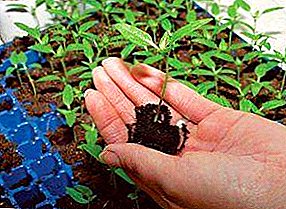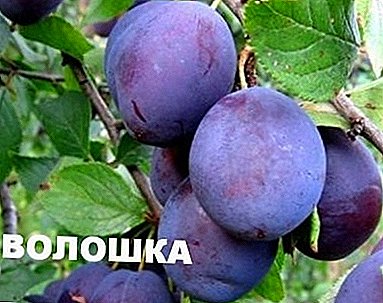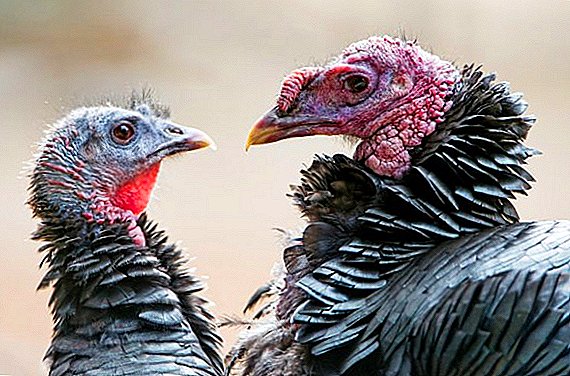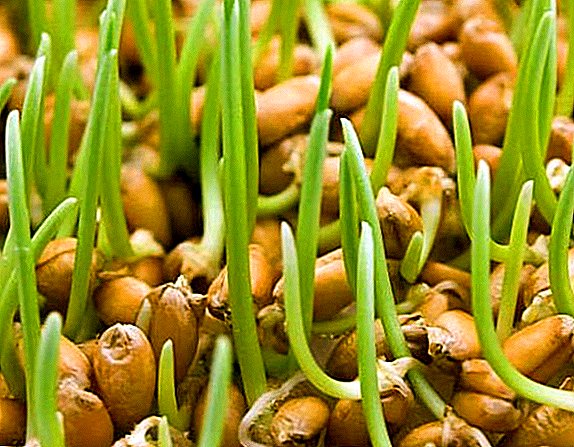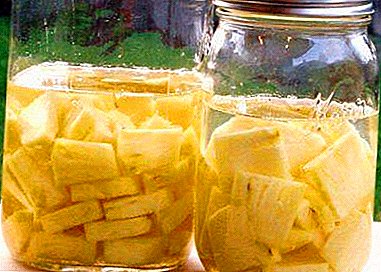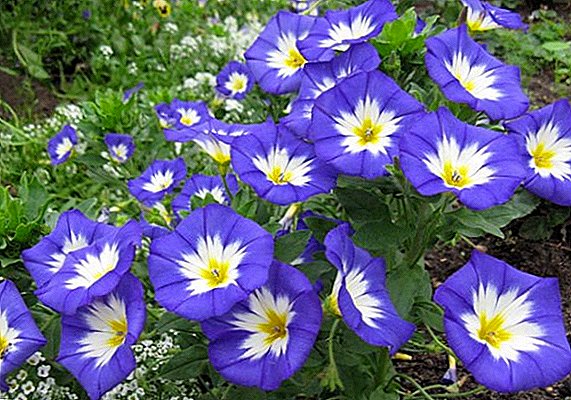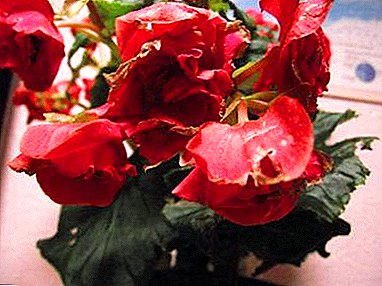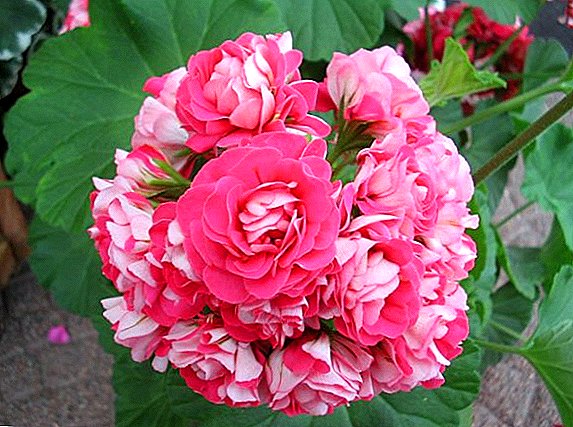 Pelargonium, or more familiar to us the name of the plant - geranium, is particularly loved by domestic growers.
Pelargonium, or more familiar to us the name of the plant - geranium, is particularly loved by domestic growers.
It draws attention to itself with simple cultivation, a non-capricious disposition and generous flowering.
However, in order for geranium to bush, it must be systematically trimmed.
Pruning geraniums is not the most difficult task, but it does require some knowledge and skills from the breeder. How to make a geranium fluffy and get from it the most generous flowering, we will tell in this article.
Why cut geraniums
Do I need to pinch geraniums - This is a question that torments many novice breeders. Very often, due to the fact that the florist does not know how to cut and pinch the geranium, it does not allow him to get a lush plant and becomes the main cause of stretching shoots in length, which leads to a decrease in the decorative characteristics of the bush. However, to get a neat, luxuriantly blooming bush, you need to know how to shape the geranium at home correctly.

Basic rules for pruning and nibbling geraniums
For the formation of a lush crown geranium must be systematically cut, but subject to certain rules. Pelargonium is absolutely not whimsical, but pruning is an important component of its cultivation, contributing to its maximum generous and prolonged flowering, and in addition, the material obtained during pruning can be used to produce new plants.
Did you know? The main task of pruning pelargonium bushes is to stimulate active growth of lateral stems and reduce the height of the bush..There are both annual and perennial geranium species. But for those who doubt whether it is necessary to cut geraniums and when to carry out this manipulation, one should be aware of the fact that perennials should be cut necessarily in spring and autumn. And now we will study in more detail how and when to pinch a geranium in order to achieve active growth of its lateral branches and a generous build-up of leaf cover.

How and when to cut geranium (pelargonium)
Before cutting the geranium, carefully inspect the bush: it may have a long main stem, and may be, on the contrary, low and bushy. Remember: when pruning geraniums, it is necessary to take into account its genetic features and only on this basis proceed to the formation of the bush. You can not try to change the genetic form of the plant, it can only be improved by pruning.
Important! When choosing the cut point, it is necessary to remember that new shoots are formed from dormant buds located in the nodes, and therefore when pruning it is not necessary to leave long internodes on the top of the bush.Trimming should be done only with a sharp, disinfected instrument in the area of the leaf node.
Pinching should be carried out only with well-washed hands, which will prevent the infection from entering the area of the cut. The cut should be treated with crushed charcoal or cinnamon powder. The stems facing the inside of the bush must be ruthlessly removed: this will free up the inner space of the bush and improve its aeration, which will reduce the likelihood of plant infection by fungal infection.
After pruning each time, it is recommended to feed the geranium with fertilizers containing a large amount of nitrogen, which will help the plant to grow green mass.
Proper pruning of the bush allows you to get a beautiful plant with a thick lush crown and a lot of charming buds.

Features spring trim
Spring pruning geraniums - this is the necessary procedure for the proper formation of the plant. Trimming room geraniums in the spring contributes to an intensive build-up of deciduous mass and will allow the plant to acquire a new green outfit and form a huge number of peduncles. However, despite all the benefits of pruning, it should be remembered that this manipulation postpones the timing of the onset of flowering, and therefore should be the most responsible attitude to the choice of the date of its implementation.
 Geranium pruning is best done in late February or early March. If the pelargonium bush is large, it is recommended to refrain from radical pruning, since the plant after such a manipulation will grow the leaves for a very long time, which will significantly postpone the onset of flowering. In large bushes, you can get by removing only long, bare or diseased shoots. If the bush has modest dimensions, then you can safely remove all unnecessary, in your opinion, branches. When pruning, make sure that all shoots left have at least two buds.
Geranium pruning is best done in late February or early March. If the pelargonium bush is large, it is recommended to refrain from radical pruning, since the plant after such a manipulation will grow the leaves for a very long time, which will significantly postpone the onset of flowering. In large bushes, you can get by removing only long, bare or diseased shoots. If the bush has modest dimensions, then you can safely remove all unnecessary, in your opinion, branches. When pruning, make sure that all shoots left have at least two buds.
How to cut geraniums in the fall
Pruning pelargonium in autumn is carried out only after the flowering of the bush. The first pruning geraniums in the fall is to remove the inflorescences that have faded, and faded stems. In addition, all dried and damaged leaves are removed from the plant. After you carry out the primary pruning, carefully inspect the bush and decide which shoots to remove to give the plant a beautiful crown.
Important! In order to achieve a more generous flowering of pelargonium in the summer, remove all buds that appear on the bushes in winter. High-quality winter geranium holidays - the key to its generous summer bloom.Long and bare shoots should be cut in the area of the lower node. If you see that the formation of young shoots in this zone will improve the external data of the pet, then pruning should be carried out a little higher than this node, as from this a new growth will later appear, which will make the crown more dense.
It is not recommended to prune the geranium from December to February, as during this period it is in the resting stage.

Secrets of pruning geraniums: how to prune geranium for lush flowering
Geranium is a magnificent plant, but it needs systematic pruning for more lush flowering. Pruning geraniums should only be done with a sharp instrument. Experts advise to use for these purposes a new blade or a clerical knife. The use of scissors for trimming geraniums is undesirable because they injure the tissue in the area of the cut. The cut should be performed immediately above the leaf node. An acute angle cut should look at the outside of the bush, as only in this case, the young shoots will not interfere with each other to develop normally and do not provoke an increased density of the crown.
Did you know? When you remove a young stem, you can do without the use of tools. In this case, pinching is carried out with dry clean fingers, trying not to pull the sprout during the manipulation in order not to damage it.Geranium is characterized by intensive development, and therefore care for it at home and in winter will require timely pruning. Do not forget in the winter when inspecting the plants periodically after appearing on the fifth shoots of the fifth point to pinch them. This will contribute to more intensive growth of bush foliage. When pruning Pelargoniums, never regret the distant shoots and remember that only young shoots of this plant can bloom.

Forming a stem tree from geranium pelargonium
Geranium is not capricious, and therefore care for a plant at home is primarily in the formation of its crown. If we approach the execution of the manipulation with knowledge, then it is possible to form at the bush any chosen form. For example, you can ensure that your pet grows in the form of a lush bush or fall in beautiful strands in a hanging pot. However, the standard trees formed from pelargonium look particularly interesting and original. Such plants look quite impressive: their bare and straight trunk can reach a height of one meter, while its magnificent crown adorn the charming bouquets of flowers.
In order to form a beautiful stem tree, it is necessary to approach the geranium a little differently. For these purposes, you should choose a tall geranium species, characterized by good health and generous flowering. 
Did you know? Pelargonium stems are very fragile, and therefore the garter of the central stem to the vertical support must be carried out very carefully. That the trunk has not broken, it is necessary to fix it to a vertical support in several places.During pruning, all lateral branches are removed from the bush and one central stalk is left. The main stem is forbidden to pinch until it reaches the desired height.
As the plant grows, it continues to cut off all side shoots, leaving only the top five points. After the stalk of pelargonium reaches the desired height, pinch its top point, which will cause its enhanced branching.
Remember that all young shoots should be pinched only after the fourth point has been formed, as this will give pelargonium a spherical shape. These plants begin to bloom a year after the end of the formation process.
Pelargonium has gained wide popularity due to its unpretentiousness, because in order to get a beautiful, generously flowering shrub, the plant grower will not have to put almost any effort.


